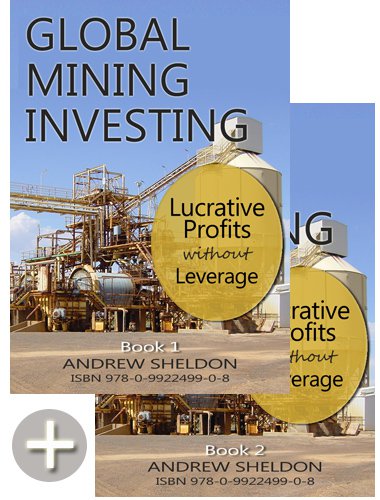On the 27th August 2014 (2 weeks ago) I gave a warning of a
possible correction in equity markets, based on the leading S&P500 Index. The prospect of a correction remains in play. Today, I'm outlining the technical drivers for a correction based on the Dow Jones Industrial Average - which is based on 28 of the leading stocks in the United States. This index is actually a better guide to the international market given the focus on the larger 'multinational' corporations.
Starting at the shortest-term chart, we can see that the index price action is trending down, and making successively low-lows, where previous support on the downside becomes resistance on the upside, conveying a downward market.
In the 2nd chart, the longer 2 month chart shows that we remain in a broader 'channel trend', so the market is ambivalent about direction, or otherwise stated, the market is an ongoing fight between buyers and sellers. You might also argue that large investors are buying or selling in this range, where buyers are actually placing large sell orders on to create resistance levels, so they can accumulate stock slowly below those resistance levels. Likewise, those companies with an adverse outlook, are placing large orders at support levels, and selling in anticipation of the channel structure breaking on the downside. The implication is that when the market finally 'breaks' it will either be a big move on the upside or downside.

The third chart is interesting because it conveys that the market is challenging previous resistance, and that its at previous highs. You might have heard as much in the last few weeks, and yet it remains at those 'highs', but sparingly so. The market has not marched on, but rather languished around those highs. In fact, it was sold off significantly to 16,500 points in late July. The index however preserves its uptrend. The question is whether it is going to break the long term trend. This is arguably just the same type of consolidation as occurred in Jan 2014, before the market marched on further.
Looking at the last chart, we can see that we are in the 5th year of this 'long market rally. Most market cycles are 7-8 years long, so it might be argued that this one has a little time to run. If this is your logic, than you might still want to exit the market because the market is still way off its long term support. It has the capacity to fall from the current 17,040 level to 16,500 points. There are a number of issues to precipitate that:
1. The poor job growth in the USA - real jobs I mean - not govt revision of methods that see 'self-starters' living on benefits classified as 'nascent entrepreneurs'. That's not to say that a "Bill Gates love child" is not among them, but rather that, you probably have not met the children of Bill Gates. But who you have undoubtedly encountered is the children of your typical conservative family, whether they are libertarians, anarcho-capitalists or liberals. They are less interested in making money until they desperately need a benefit.
2. The prospects of sustained war with Russia in the Ukraine - There is some apprehension about a protracted war. I personally don't see how such a war is likely given the capacity of Western nations to undermine the logistical support lives of counterparts. There will not be a war, but there will be a lot of bluffing. In the interim, you have a lot of apprehension, and war only undermines confidence.
3. The prospects of a terrorist threat. Today is Sept 11th. Are we going to expect a re-occurrence of terror? Its a symbolic gesture that undermines market confidence, however this time round the 'potential' is worse than the reality because it immediately becomes apparent that life goes on, and there are just too many targets. Whose going to miss a flight? The 300 passengers on board a plan and 15,000 relatives and 30,000 friends. Its very sad, but the world will go on. Even if you had 10 such events a year, it would be traumatic, but we would endure it. The odds of it happening to people in 'most parts of the world' are low. Most events would be in certain parts of Asia, EU, Africa and the Middle East. i.e. In places where markets are small or already depressed.
We are looking for a retracement to 16,500 points, and thereafter a possible fall to 14,000 points. The foundamentals for the global economy are actually very good. The problem I would argue is not the 'fundamentals' of excess debt, but really the travesty of too high property prices. The reason is that, when property prices get to a point where they are so high, two things happen:
1. Existing property investors see no further opportunity for gains, so they are not financing their activities with more passive property income
2. Aspiring property buyers are deferring their property purchases, which means they are not buying all the accessories that go with property acquisition.
3. Revision of market values are occurring as well. Many youths are responding to the 'new market reality' with more modest consumptive patterns of behaviour. This is great for the environment, for their long term 'savings sustainability', but it hits the current 'consumption driven' paradigm for this economy.
The implication is that once the stimulus from the central banks is seen for what it is, this market is going back down, and it will hurt the speculators and savings of people. This is part of the appeal for the government. Its your savings, so the impact is on your balance sheet, not the 'public budget'. The fact that you don't need to worry because your super will not be claimed for years, is part of the reason why, as investors, you will tolerate their bad custodianship, and not question the legitimacy of their
form of governance. So we can expect government to continue going about their dirty business for at least the first start of this cycle, but in the long term there is solid prospects for political reform and fundamentally a very strong economy.
Asian property markets outperforming Japan Foreclosed Guide Philippines Property Guide
Profit from mining with Global Mining Investing eBook





















